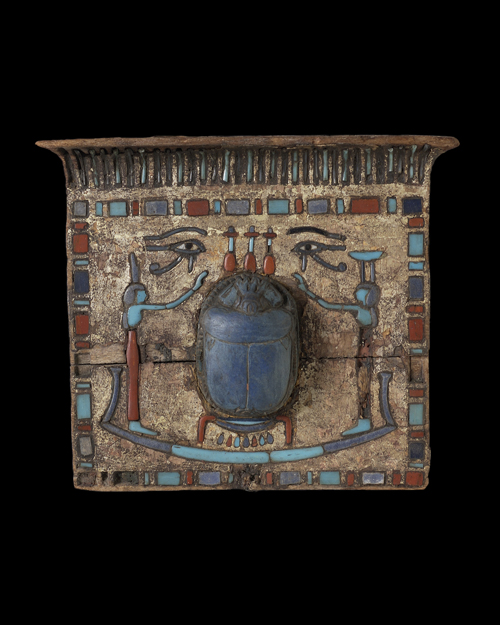
© 2004 Musée du Louvre / Christian Décamps
New Kingdom, late 18th-19th dynasties, c. 1400 - 1200 BC
Gilded wood inlaid with glass, faience, and lapis lazuli
H.: 11.6 cm; W.: 14 cm; D.: 0.5 cm
Department of Egyptian Antiquities, Musée du Louvre
(AF 2560)
These plaques—pieces of jewelry in the shape of a chapel—were designed to hang on the chest. They were usually decorated with funerary motifs and offered protection to mummies. On this one, at some point during the latter half of the New Kingdom period, the two main myths of eternal life were fused into one. Those myths were the solar cycle and the rebirth of Osiris. On one side, colorful inlay on a gilded ground show the solar barque occupied by a large scarab, the rising image of the sun, the god Khepri, in glass (or faience) that imitates lapis lazuli over the sign for gold (the divine material). The sun moves across the sky—and then into the underworld—on a boat called a barque, a key vehicle in the Egyptian universe. It is framed by the protective gestures of two goddesses, Isis and Nephthys (their names are on their heads) who are none other than the wife and sister of Osiris, respectively, and who played a crucial role in his rebirth. Above are the words, “See perfection.” The two myths have been merged. On the back, two symbols, the djed pillar and the tit knot recall the presence of Osiris and Isis, finely carved in the gilded wood.